Jean Lurcat Lithograph Fish with Verse c1950 Signed in the frame with its number It is No 123 out of 200 Total measure 51cm (20 ins) x 61cm (24 ins) The frame will be included without the glass Lurcat 1892-1966 As a young man Jean Lurçat studied at the Académie Colarossi in Paris and worked in the studio of the engraver, Bernard Naudin. He met painters such as Matisse, Cézanne, Renoir; his friends included Rainer Maria Rilke, Antoine Bourdelle, and Elie Faure. Lurçat and three associates founded the Feuilles de Mai (The leaves of May), a journal of art in which these artists and writers participated. He then became an apprentice of the painter Jean-Paul Lafitte with whom he had an exhibition at La faculté des Sciences de Marseille. In 1921, Jean Lurçat met Louis Marcoussis, created decoration and costumes for Le Spectacle de la Compagnie Pitoeff. He participated in several expositions with Raoul Dufy, Marcoussis, Laglenne and others. He created tapestries and paintings for Le Vertige, a film by Marcel l'Herbier. In 1926, he exhibited in Paris and Brussels, and participated in collective exhibitions in Vienna, Paris, and Anvers. Examples of his tapestries can be found in the Musée national d'art moderne (National museum of modern art). In 1930 he had exhibitions in Paris, London, New York, and Chicago. He created nine drypoint illustrations for Les Limbes (The limbo) by Charles-Albert Cingria. In December, 1932, Lurçat participated in the exhibition Sélections with Matisse, Picasso, Braque, Derain and Raoul Dufy. The event was organised in New York by the Valentine Gallery. He created the decoration and the costumes for the Jardin Public (Public garden), a ballet by George Balanchine. 1933 also saw his first tapestry sewn at Aubusson, following the new and revolutionary technique that he developed. In 1934, Lurçat returned to New York where he participated in the creation of new decoration and costumes for a choreography of Balanchine, which he unveiled in Chicago and Philadelphia. Then he returned to Paris and Vevey for the summer. At summer's end, he departed for Moscow, where he had an exhibition at the Musée Occidental (Western Museum) and at the museum of Kiev. In 1935, he painted the Dynamiteros in Spain; with inspiration from the revolution and the War of Spain. In Paris, he participated in the activities of the Association of the revolutionary authors and artists. In 1936, Jean Lurçat was inspired when he saw the tapestry L'Apocalypse (The Apocalypse), which was woven in the 14th century. In 1939, he exhibited in New York and in Paris. In September, he took up residence in Aubusson with Gromaire and Dubreuil. His innovative technique used a simplified palette and robust weaving at broad point. In 1940, he collaborated with André Derain and Raoul Dufy. In 1941 he created his fifth tapestry, Le Cirque (the circus), for Mme. Cuttoli.
Jean Lurcat Lithographie Fisch mit Vers um 1950 Signiert im Rahmen mit seiner Nummer Es ist Nr. 123 von 200 Gesamtmaß 51cm (20 ins) x 61cm (24 ins) Der Rahmen wird ohne Glas mitgeliefert Lurcat 1892-1966 Als junger Mann studierte Jean Lurçat an der Académie Colarossi in Paris und arbeitete im Atelier des Graveurs Bernard Naudin. Er lernt Maler wie Matisse, Cézanne und Renoir kennen; zu seinen Freunden gehören Rainer Maria Rilke, Antoine Bourdelle und Elie Faure. Lurçat gründet zusammen mit drei Kollegen die Feuilles de Mai (Blätter des Mai), eine Kunstzeitschrift, an der diese Künstler und Schriftsteller mitwirken. Anschließend wird er Schüler des Malers Jean-Paul Lafitte, mit dem er eine Ausstellung in der Fakultät der Wissenschaften von Marseille hat. 1921 lernt Jean Lurçat Louis Marcoussis kennen und entwirft Dekorationen und Kostüme für Le Spectacle de la Compagnie Pitoeff. Er nimmt an mehreren Ausstellungen mit Raoul Dufy, Marcoussis, Laglenne und anderen teil. Er schuf Wandteppiche und Gemälde für Le Vertige, einen Film von Marcel l'Herbier. Im Jahr 1926 stellte er in Paris und Brüssel aus und nahm an Kollektivausstellungen in Wien, Paris und Anvers teil. Beispiele für seine Wandteppiche befinden sich im Musée national d'art moderne (Nationalmuseum für moderne Kunst). Im Jahr 1930 hatte er Ausstellungen in Paris, London, New York und Chicago. Er schuf neun Kaltnadelradierungen für Les Limbes (Die Vorhölle) von Charles-Albert Cingria. Im Dezember 1932 nimmt Lurçat an der Ausstellung Sélections mit Matisse, Picasso, Braque, Derain und Raoul Dufy teil. Die Veranstaltung wurde in New York von der Valentine Gallery organisiert. Er entwirft die Dekoration und die Kostüme für Jardin Public (Öffentlicher Garten), ein Ballett von George Balanchine. 1933 wird auch sein erster Wandteppich in Aubusson genäht, nach der von ihm entwickelten neuen und revolutionären Technik. 1934 kehrte Lurçat nach New York zurück, wo er an der Schaffung neuer Dekorationen und Kostüme für eine Choreografie von Balanchine mitwirkte, die er in Chicago und Philadelphia vorstellte. Danach kehrt er für den Sommer nach Paris und Vevey zurück. Am Ende des Sommers reist er nach Moskau, wo er eine Ausstellung im Musée Occidental (Westliches Museum) und im Museum von Kiew hat. 1935 malt er die Dynamiteros in Spanien, inspiriert von der Revolution und dem Krieg in Spanien. In Paris nimmt er an den Aktivitäten der Vereinigung der revolutionären Schriftsteller und Künstler teil. 1936 wird Jean Lurçat durch den Wandteppich L'Apocalypse (Die Apokalypse) inspiriert, der im 14. Im Jahr 1939 stellt er in New York und Paris aus. Im September lässt er sich in Aubusson bei Gromaire und Dubreuil nieder. Seine innovative Technik besteht aus einer vereinfachten Farbpalette und einer robusten, breiten Webart. Im Jahr 1940 arbeitet er mit André Derain und Raoul Dufy zusammen. 1941 schuf er seinen fünften Wandteppich, Le Cirque (der Zirkus), für Frau Cuttoli.
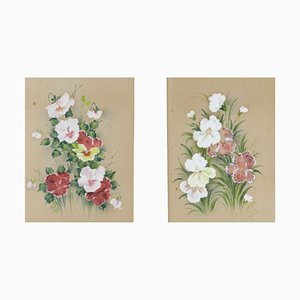

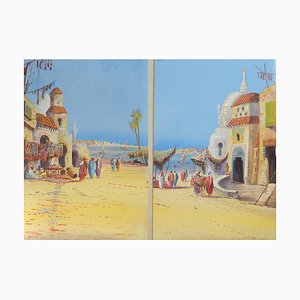

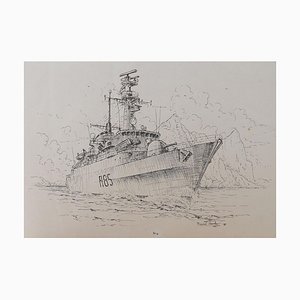
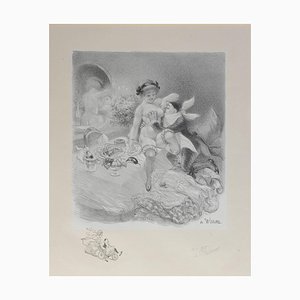
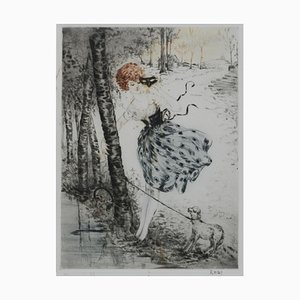

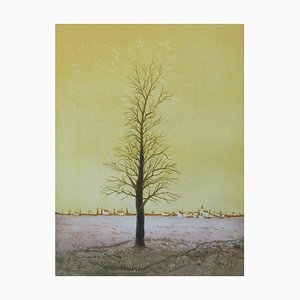
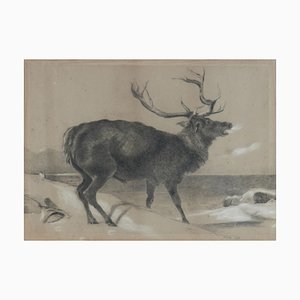
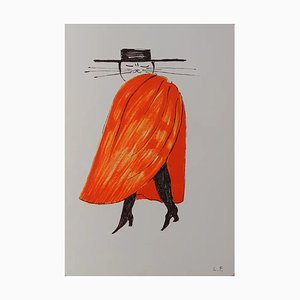
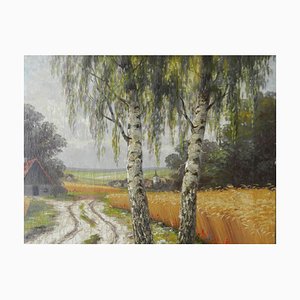
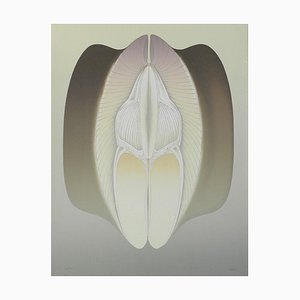
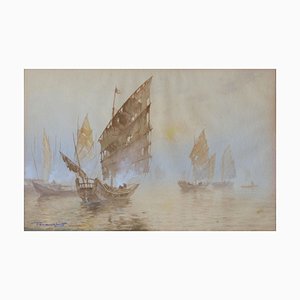
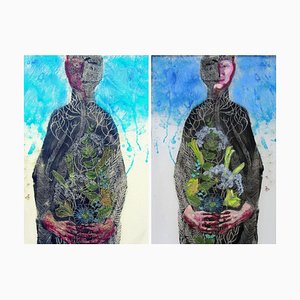
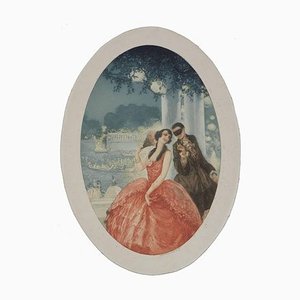
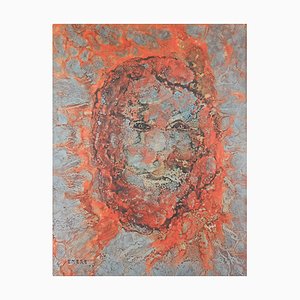

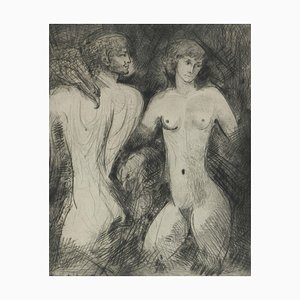
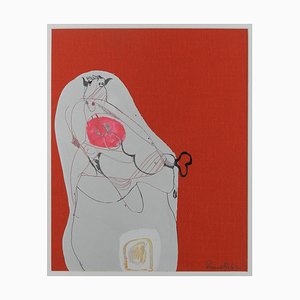
Schreiben Sie uns
Ein Angebot machen
Uns ist aufgefallen, dass Sie neu bei Pamono sind!
Bitte akzeptieren Sie die Allgemeinen Geschäftsbedingungen und die Datenschutzerklärung
Schreiben Sie uns
Ein Angebot machen
Fast geschafft!
Um die Kommunikation einsehen und verfolgen zu können, schließen Sie bitte Ihre Registrierung ab. Um mit Ihrem Angebot auf der Plattform fortzufahren, schließen Sie bitte die Registrierung ab.Erfolgreich
Vielen Dank für Ihre Anfrage! Unser Team meldet sich in Kürze bei Ihnen zurück.
Wenn Sie Architekt*in oder Inneneinrichter*in sind, bewerben Sie sich hier um dem Trage Program beizutreten.